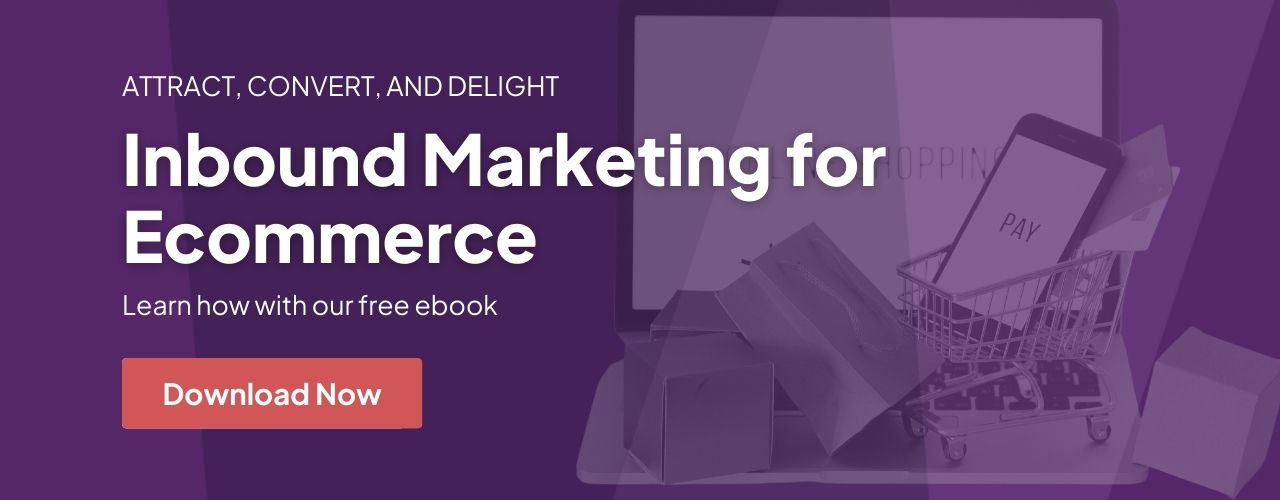Your business simply will not grow unless you can generate new leads and convert them into customers. That’s why designing a lead generation website is an essential part of your inbound marketing strategy.
What is a Lead Generation Website?
A lead generation website is one that has a primary goal to convert a website visitors on a call-to-action (CTA) into a new lead. Typically, the visitor will convert on a lead offer like an ebook, tip sheet or white paper.
This guide explores some essential components of a lead generation.
Lead Generation Website Best Practices
It's not enough to simply have a website. If your site isn't converting visitors into leads then what's the point?
Best SEO Checklist When Creating a New Website
1. Lead Generation Forms
The best lead generating websites often use forms to receive contact information, which visitors actually opt-in to giving you. This is important since it signifies that the visitor has an active interest in your company. These valuable leads are usually more likely to become customers if nurtured properly.
Embedding these forms directly onto your site makes it easy for visitors to convert into sales leads. Many website hosts allow you to create forms for your page and embed them on your homepage or elsewhere on your lead-generating website.
5. Pop-up Forms
In today’s online world, the word “pop-ups” can have a negative connotation. However, using pop-ups correctly can help build engagement on your website. Using pop-ups effectively includes:
- Offering the visitor something of value so it enhances his/her experience, rather than interrupting it.
- Timing the pop-ups’ appearance so they’re triggered by the visitor’s actions.
- Using natural, action-focused language.
- Not cluttering the mobile experience with unwanted interruptions.
You can easily add pop-up forms to webpages that already use traditional CTAs and embedded forms. These elements all work together as part of your lead generation strategy.
/Imported_Blog_Media/hubspot-pop-up-form-750x480-Jun-28-2021-11-00-11-20-PM.png?width=750&height=480&name=hubspot-pop-up-form-750x480-Jun-28-2021-11-00-11-20-PM.png)
2. Gated Content Offers for Pages, Posts & Landing Pages
A gated content offer AKA lead magnet, is relevant and valuable information used
Marketers use gated content to generate leads by providing prospects with valuable information in exchange for their name, email address, industry, title, and other contact information. ... If you are solely looking to build brand awareness, then offering the content without a gate likely is a better strategy.
Landing pages are vital components of lead generation sites. The more landing pages you include, the more potential site conversions you’ll have. Landing pages also offer SEO benefits, making an impact before the visitor even arrives at your site.
A few elements to include on a landing page include social media share buttons and “social proof,” which we’ll explain later in the guide. The design and length of your landing page will depend on your company’s unique needs.
2. Track Leads in a CRM
Once your contact forms have been created and embedded into your website, you’ll need a method of collecting and tracking the submissions. That’s where a CRM tool comes in to help. These useful tools account for each form submission, adding the information to your contact database.
When you consolidate your leads in one convenient place, it will be much easier to follow up with prospects and start a dialogue. In addition, new form submissions can trigger an automation workflow and can send them lead nurturing emails or even track their behavior on your website.
/Imported_Blog_Media/hubspot-sales-crm-3.jpg?width=750&height=372&name=hubspot-sales-crm-3.jpg)
3. Primary & Secondary Calls-to-Action
When people visit a company’s website, they’re usually trying to complete an action. They may be looking for a specific product or shopping around for a particular service. Other times, the visitor is looking at the site to research or browse a collection of products. With calls-to-action, you can guide these visitors forward during their research and eventually lead them towards making a purchase.
/Imported_Blog_Media/Email-List-2-300x83-Jun-28-2021-11-07-03-51-PM.png?width=300&name=Email-List-2-300x83-Jun-28-2021-11-07-03-51-PM.png)
A strong call-to-action (CTA) will encourage visitors to complete a task or make a purchase.
The best lead generating websites contain multiple secondary CTAs to guide users throughout different parts of the sales funnel. However, the primary CTA is important because it exists above the fold of your lead-generating website pages. Its goal is to lead people into doing the thing you ultimately want them to do on every page. This could be anything from signing up for an account to requesting a demo.
6. Mindful CTA Placement and Intuitive Design
Converting leads to customers is much more effective when your layout, CTA placement, colors, and other elements are created with the readers in mind. When your company communicates its message clearly, you strengthen trust and build your brand’s value among consumers.
Most importantly, your website’s pages should be designed with lead generation at the forefront. One technique is to utilize the F-pattern, which is the pattern in which a visitor reads a web page. The eye naturally falls to the upper left-hand corner of the screen first, then moves on from there in an "F" motion.
7. A Blog With CTAs
If your business doesn’t currently operate a blog, you’re missing out on a lead-driving engine. Blogs can help drive traffic to your website and convert visitors into leads. They also add SEO value to your website, since every blog post will be indexed into search engine results.
Placement is important! Make sure your website's design is intuitive and visually attractive.
Adding lead-generating CTAs to your blog that point to free content can also help generate leads. You can also create blog posts that discuss some of your lead-generating offers. Include a CTA and link to the company’s landing page on these blogs.
8. Social Proof & Trust-Builders
When a site visitor becomes a lead, he or she must give the company some personal information - an email address, full name, or maybe even a phone number. Often, people don’t feel comfortable doing so unless they’ve established a level of trust with your company. Social proof items offer a way to establish credibility with site visitors. These items include:
- Customer testimonials
- Case studies
- Prominent client logos
- Trust Seals
Over to You
These are just some of the best practices for structuring a lead-generating website - your company’s unique needs may vary. With a great lead generation plan in place, you’ll be able to grow your business by establishing trusting relationships with customers.


/Imported_Blog_Media/leadgen-website-1.jpg)





